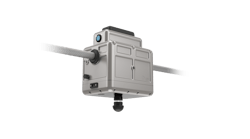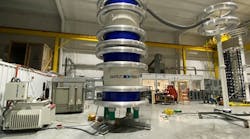In modern society, the reliable and abundant supply of electricity for mass consumers is often taken for granted. The industry in charge of supplying the end consumers is often under significant scrutiny for expenses, particularly in government-owned enterprises. The issue with minimizing capital expenditure (Capex) is often exacerbated by the sporadic understanding of electricity distribution by the end customer. When budget is given such intense scrutiny, critical reliability projects such as substation constructions and upgrades are often postponed or delayed purely to avoid the economic heartache of expensive substation grade breakers. Fortunately, with the evolution of distribution-level switchgear, there is a growing class alternative to the traditional substation breaker, which is providing an optimum solution to the issue.
Regardless of the location in our world, the idea of a substation build or upgrade carries a significant associated price tag. The costs are associated with the scale of the equipment required, but also with the separation of primary and secondary systems within the substation. Primary equipment refers to the actual switchgear, circuit breakers, switches and other high voltage equipment, whilst the secondary systems refers to the control, protection and automation devices in a substation. Both of these classes of capital equipment are mandatory, and both require a substantial investment. It is a reasonable assumption to make that on average, there is a corresponding secondary system for almost every primary device in the substation. It is quite easy to note how this price can all add up very quickly.
However, there is a class of switchgear already in use around the world, which consolidates the primary and secondary side of equipment into a single integrated solution. This class of switchgear often carries current interruption capabilities far beyond true expectations out on distribution lines. The solution is the distribution network staple: the Automatic Circuit Recloser (ACR).
ACRs are already deployed around the world with protection, control and automation in mind. In fact, oftentimes the only difference between ACRs and substation class circuit breakers is the fault interrupting capacity. Provided that substation fault currents are below 16kA with average load current below 800A, then there is no reason a substation could not use ACRs as incoming and outgoing circuit breakers in lieu of traditional, expensive substation class equipment.
By using ACRs in the substation environment, the utility is able to introduce an integrated solution to address the full requirements of their substation. Since the solution is integrated, commissioning and testing of new secondary systems is far simplified as a single vendor is chosen for the particular infrastructure.
Modern ACR control systems such as NOJA Power’s RC10 controller is preloaded with all the anticipated standard substation protection capabilities, along with advanced capabilities such as IEC61850, Neutral Voltage Displacement and ANSI25 Synchrocheck. Utilities can stand to save a fortune on secondary systems as all the usual “options” are simply supplied as standard with modern ACRs.
Obviously, given the maximum fault ratings of ACRs being around 16kA with constant load currents at 800A, there is a reasonable limit as to where this economic solution can be deployed. However, it is still well within reason that the majority of rural substations can be run using ACRs operating under these limits. NOJA Power has witnessed multiple installations around the world where utilities have deployed ACRs in a substation environment, even as incoming and outgoing breakers. This application is commonplace throughout the world, where for example the 38kV incomer is fed through a NOJA Power OSM38 Auto-Recloser, into a 38kV/15kV transformer and out through multiple 15kV Feeders each protected by a NOJA Power OSM15 Auto-Recloser.
This development of capability has become so popular that NOJA Power has developed a suite of substation standard functionality and products designed to assist in solving substation challenges with traditional pole-top ACRs. NOJA Power’s substation mounting bracket, remote HMI panel, Ground Mount Recloser Kiosk and IEC61850 are just a few of the developments which have been created to solve the challenges unique to this environment.
“Smart substations can be very economical to build today because of the NOJA Power OSM recloser that comes complete with fully integrated protection, automation, data logging, and remote control in a single package solution,” reports NOJA Power Group Managing Director Neil O’Sullivan. “IEC61850 Smart substations don’t actually need multi-million dollar integrated control rooms, it can be achieved today in an outdoor pole mount environment using reclosers as the entire protection system for the zone substation.”
There is no need for utility network engineers to dread the expenditure in maintaining or augmenting a distribution network. There are significant costs which can be avoided and saved by deploying ACRs in place of traditional substation circuit breaker. The key factor in deploying ACRs in substation environments is the fault break capacity. Provided the design of the substation does not call for fault interruption greater than 16kA, why would a utility use anything else?


